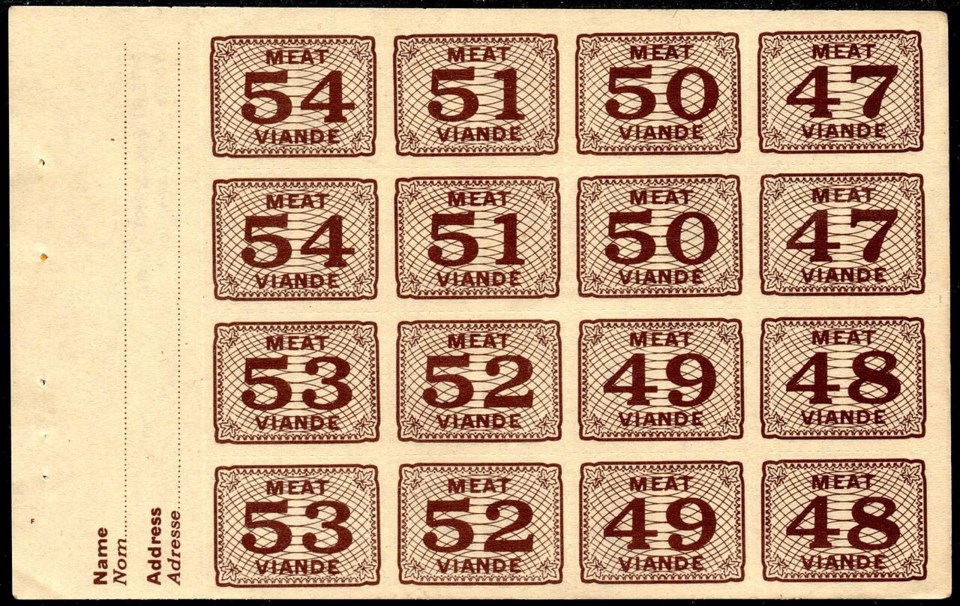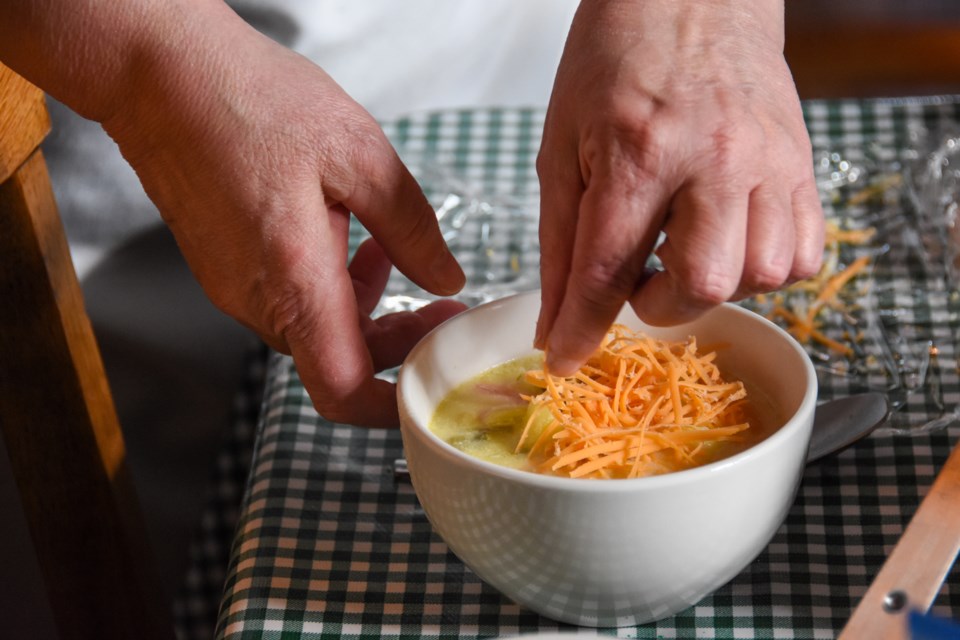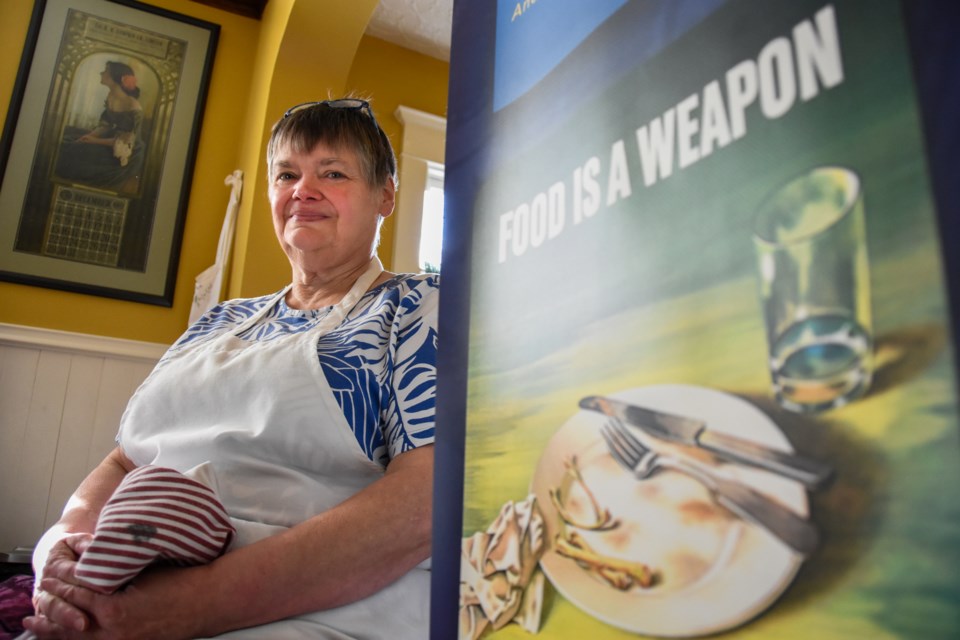Once largely contained to China, recent outbreaks of the coronavirus pathogen have popped up in more than 50 countries — including local outbreaks in Iran, South Korea and Italy — raising fears of a global pandemic and prompting people to rush grocery store shelves to stock up on food.
Here in Canada, some health officials have warned that such a scenario could be on the near horizon and that people should be prepared to stock up on a month’s supply of food, raising the question: What’s the best way to ration?
That’s the query a handful of people tried to answer last weekend at the historic Mackin House Museum in Coquitlam, where lessons of the past collide with the challenges of the present in an exhibit titled Home Front: World War II.
By 1943, Canada was immersed in war. And as young Canadians were shipped off to Europe to storm the beaches of Italy and later France, the best foodstuffs were not far behind. With immense pressure to feed both soldiers overseas and the isolated people of Britain, Canada instituted a rationing program.
“The truest patriot is the healthy one,” read the opening of the 1943 cookbook How to Eat Well Though Rationed, hanging above the Mackin House’s kitchen sink and evoking the nationalist sensibilities heard today in a China racked by epidemic.
“Good food and plenty of it is the first step toward health. Only healthy people can work hard, do their jobs better and help us win the war sooner!”
From “A Tasty MEATLESS Dinner” to “Soup-to-nuts cake” and "Victory Garden Chowder," these wartime cookbooks followed the contours of a nation in a time of scarcity.
That’s where Monica Mueller comes in. A chef and professional chandelier who has taught culinary mathematics at BCIT, last weekend, Mueller and a group of local residents gathered in the historic Coquitlam house’s kitchen to cook up a batch dishes circa 1943.
The ingredients, as the workshop participants would soon learn, were limited.
As the world plunged deeper into war, supply lines were re-worked so that anything coming by ship to Canada — cinnamon, nutmeg or vanilla — while perhaps not rationed, was still hard to get.
“We had some chocolate stores here in town in the 1930s, early 1940s, but most of the chocolate was actually processed in Europe, so once that was under siege, it was difficult to get,” Mueller told the group as they sat down to eat.
Rationing “began with sugar but soon also included coffee, tea, meat, butter and alcohol,” according to the Home Front exhibit.

Some of the participants, like former Coquitlam resident Helen Bayogos and former Port Coquitlam resident Delarm Fathi, came for the DIY experience of cooking with a dearth of ingredients. Others, like Tina Chan, came with the wider world in mind.
But where during the war, everything was done to reduce waste so as to help troops and allies overseas, today, some of those same cultural currents — a scientific underpinning of health and using up leftovers and scraps — are geared to the environment and family pocketbooks.
“They were reducing it because they didn't have a choice. And now we're trying to reduce it because we know what that choice means," said Chan. "Everyone's got their own reason why."
Local production was also ramped up; at their peak, Victory Gardens — private plots of vegetables grown to ease demand on commercial farmers — reached 200,000 nationwide, producing 57,000 tons of veggies, according to Coquitlam Heritage.
Meanwhile, advances in industrial food processing led to such innovations as powdered cheese and instant coffee. By war’s end, Canada had transformed into a highly industrialized nation. Women, who had largely been confined to domestic duties, were participating in the workforce more than ever.
With that, Mueller reminded the table over soup, there was a big shift to more processed food and cooking skills were lost.
“They were more about ‘open box one, add envelope two,’” she said, pointing to how processed food, due to convenience and low cost, caught on.
Now, like the restaurant industry, those home-cooking skills are in the midst of a renaissance as the foodie revolution expands culinary horizons from Port Coquitlam to Rome.
“We have generations now that are wanting to eat better and learn how to do things from scratch, and are more interested in bringing back that knowledge,” said Mueller.
As during wartime, federal and provincial authorities are looking to ramp up their response to what’s being increasingly viewed as a global emergency, and personal preparedness will continue to play an important role in stemming the spread of the COVID-19.
That includes keeping enough personal medications on hand, making alternative child care and work arrangements, and, crucially, making sure there’s enough food in your cupboard.
Here, the past, and its culinary turns, could be more instructive then we might think.
VICTORY GARDEN CHOWDER

1/4 cup of butter or mild dripping
3 medium onions, peeled and chopped
2 slices green pepper, chopped fine
21/4 cups cut green beans
3 medium carrots, scraped and sliced thin
5 medium potatoes, peeled and grated
3 cups boiling water
4 cups milk
2 teaspoons salt
Black pepper to suit taste
6 oz. cheese, grated
Seasoning salt
Melt butter or dripping in soup kettle. Add onions and green pepper, and simmer 3 to 4 minutes. Wish beans and slice thin. Prepare carrots and potatoes. Add beans and boiling water to butter and onion mixture, and cook for about 15 minutes. Add other vegetables and cook about 15 minutes longer, or until all the vegetables are tender. By this time most of the water will be evaporated. Add the milk to the chowder, string carefully; heat just to boiling. Add salt, pepper and grated cheese; remove immediately from that and stir until cheese is melted. Serve piping hot with a sprinkling of sensing salt on each serving. Serves 6.



